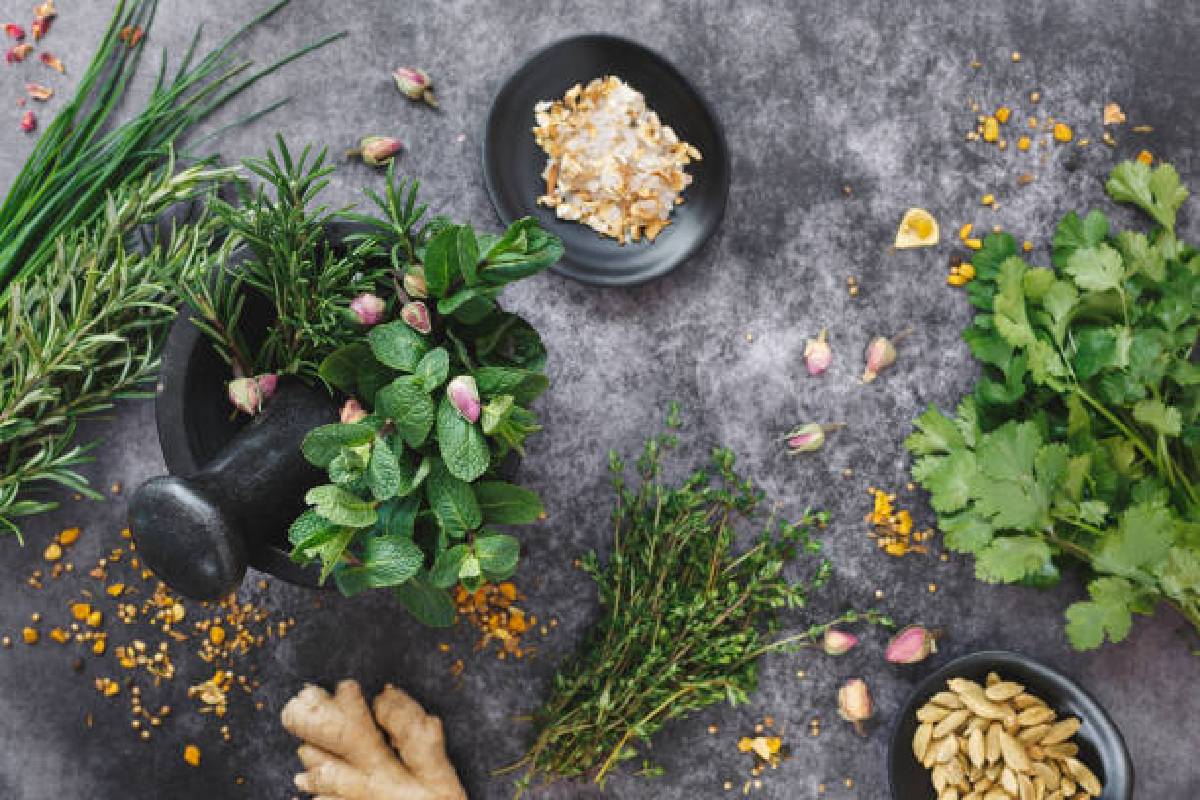Ancient civilizations relied mainly on various herbs for their therapeutic powers long before modern medicine. While research increasingly demonstrates that many of the most popular grocery store options possess properties that may help lower the risk of developing certain specifics or lessen certain specifics, there is very little scientific evidence that any herb can directly prevent or cure serious diseases.
The advantage of putting herbs in your diet is that they make everything taste and smell better. They encourage you to consume more of the things you need, such as veggies and whole grains.
Herbs are tasty and compact, but they also have a wealth of nutritional advantages, depending on your taste preferences and the meals you wish to use. You have many options for culinary herbs. Here is the research behind the benefits of these seven foods and some advice on how to eat enough of them.
1. Oregano
According to a study conducted by food scientists at the U.S. Department of Agriculture (USDA), oregano has antioxidant activity ranging from 3 to 20 times higher than any of the other 38 herbs examined.
According to the researchers, the plant contains 42 times more antioxidant activity per gram than apples and four times more than blueberries, two of the most potent sources of antioxidants.
It was shown that the main antioxidant in oregano is rosmarinic acid. These antioxidants can stop the bodily processes that generate free radicals, which harm cells and eventually cause illnesses, including heart disease, cancer, and type 2 diabetes.
Research has also been done on the inherent antibacterial properties of oregano oils. In other words, they prevent harmful bacteria like Escherichia coli from growing.
Tips To Use The Herb
You’re probably used to using dried oregano, but try grabbing for the fresh leaves for a more robust flavor. Chili, marinades, marinara sauce, omelets, and salad dressings can all be improved with oregano and pizza. Add oregano leaves to meals in the last few minutes of cooking to soften their potent flavor.
2. Basil
This favorite of the summer may benefit your eyes. According to a USDA nutrition analysis, it contains both lutein and zeaxanthin. The most common cause of vision loss is age-related macular degeneration.
Basil has high dietary quantities of these chemicals. These substances shield our eyes from harmful light and have direct antioxidant actions. They are deposited in the macular region of the retina of the eye.
In addition, basil has high levels of vitamin K and low levels of beta-carotene, manganese, and vitamin C.
Tips To Use The Herbs
Although basil is best known as the main component of traditional Italian meals like pesto, pizza, and caprese salad, its sweet flavor also complements a variety of other foods and beverages. Consider serving it with seasonal favorites like tomatoes, peaches, and grilled meats.
3. Peppermint
Originally from the European continent, peppermint (Mentha piperita) is now grown worldwide. There are many different types of mint, but peppermint and spearmint are the most popular. You probably already know how frequently mint is used to flavor or scent soaps, cosmetics, toothpaste, mouthwashes, and other items, but there are also reasons to utilize these leaves to freshen up your diet.
A few flavonoid antioxidant substances, principally eriocitrin, luteolin, and hesperidin, are present in the common herb.
Two of the most notable effects of these flavonoid molecules are their ability to reduce inflammation and act as antioxidants.
Although menthol, the primary ingredient in peppermint, has been demonstrated to relax gastrointestinal tissue in tests, there is conflicting evidence about peppermint’s potential to relieve stomach discomfort.
There is mixed information regarding the ability of peppermint to ease stomach discomfort, even though menthol, the main component of peppermint, has been shown to relax gastrointestinal tissue in experiments.
It was revealed that in patients receiving chemotherapy, the aroma of peppermint oil could noticeably lessen the frequency of nausea and vomiting. Pregnant women may also benefit in the same way from it.
Tips To Use The Herbs
Peppermint leaves can be added to tea or used to flavor smoothies, sauces, grain bowls, fruit and vegetable salads, and grain bowls.
4. Parsley
More than just a garnish, this Mediterranean green has many more uses. Data showed that persons who consumed more vitamin K-rich foods had a lower risk of cardiovascular disease associated with atherosclerosis.
It is an excellent source of vitamin K, providing more than two times what you need daily.
Vitamin K supports increased bone density to lower the risk of osteoporosis and aids in the body’s production of the proteins required for blood clotting, which prevents excessive bleeding from wounds.
Since parsley and cilantro have a similar appearance, be sure to choose the slightly stiffer greens with pointier leaves when shopping for the former.
Tips To Use The Herbs
Parsley is a fantastic all-purpose ingredient in the kitchen because of its gently bitter, fresh, peppery flavour. Sprinkle a handful or two, chopped, over roasted potatoes, salads, soups, and pasta dishes. Make a tabbouleh salad instead!
5. Rosemary
Rosemary is simple to cultivate inside and is valued for both its flavour and distinctive scent. It is perfect for city dwellers with little space. Its prickly leaves should be commended for their potential antioxidant properties.
Although additional research is required, rosemary contains polyphenol antioxidants that may help inhibit the formation of tumours and the spread of malignant cells.
Before grilling, marinating beef in a rosemary-based mixture reduced the production of cancer-causing heterocyclic amine chemicals in the meat by up to 84 percent.
Those who smelled rosemary fared better on tests of memory and other cognitive abilities. One of its constituents, 1,8-cineole, is thought to increase brain activity.
Tips To Use The Herbs
This herb can be used to impart a piney taste to anything from roasted root vegetables to stews and frittatas. Also used to marinating grilled meats.
